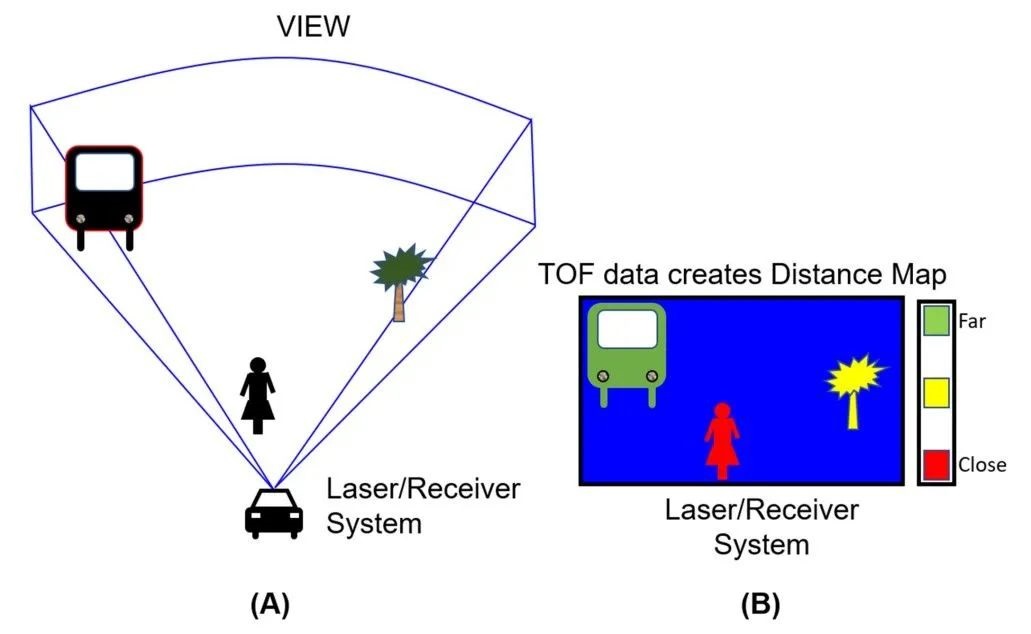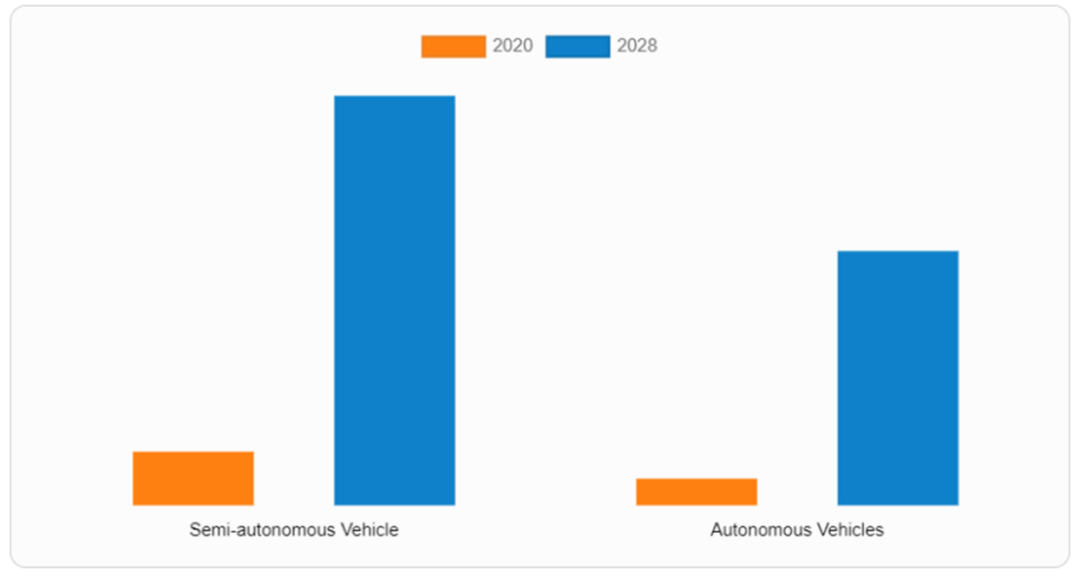
What is Lidar (LiDAR)? Lidar combines radar ranging capabilities with camera angular resolution to provide accurate depth-aware sensing to complete the image (Figure 1).

Figure 1: Cameras, radar, and lidar are the three technologies of choice for autonomous driving. (Image credit: ADI)
The visual part represents camera or driver visibility, object classification, and lateral resolution. Darkness and weather conditions such as snow, dust or rain can impair these abilities. The radar part represents the return of the RF signal. This signal is immune to weather conditions and darkness, while also measuring distance. The lidar part can complete the sensing picture by providing further object classification, lateral resolution, ranging and dark penetration.
How does lidar work?
The basic elements of a lidar system include a square wave transmitter system, the target environment, and an optical receiver system used to interpret the distances to external elements in the environment. The lidar sensing method uses light in the form of a pulsed laser to measure range by analyzing the time-of-flight (ToF) of the returned signal (Figure 2).

Figure 2: Each lidar transmit unit has a triangular "field of view". (Image credit: Bonnie Baker)
The drawing of the distance depends on the optical digital signal.
Signals in the digital domain
The circuit solution of lidar is to solve the problem of signal reception through automotive transimpedance amplifier. The input stage is used to accept negative input current pulses from the photodetector (Figure 3).

Figure 3: The electronic part of a lidar consists of a laser diode transmitter and two photodiode receivers. (Image credit: Bonnie Baker)
Laser diodes transmit digital pulses through a piece of glass. This signal is also reflected on the D2 photodiode. The processing of this signal provides the transit time and electronic delay built into the system.
The digital light signal pulses hit the object and are reflected back to the optical system. The returning pulse is mirrored to the second photodiode D1. The electronic part of the D1 signal path is the same as the D2 signal path. The flight time can be calculated after the two signals reach the microcontroller (MCU).
Market snapshot
Automotive lidar systems use pulsed laser light to measure the distance between two vehicles. Automotive systems use lidar to control vehicle speed and braking systems in response to sudden changes in traffic conditions. Lidar plays an important role in semi- or fully automatic car assistance functions such as collision warning and avoidance systems, lane-keep assist, lane-departure warning, blind-spot monitors, and adaptive cruise control. Automotive lidar is replacing radar systems in earlier vehicle automation systems. Lidar systems can range from a few meters to over 1,000 meters.

Figure 4: The automotive lidar market is segmented into semi-autonomous and fully autonomous vehicle applications. (Image source: Allied Market Research)
Self-driving cars are already in widespread use, and lidar imaging systems will further improve the situation. Radar, cameras and lidar equipment are still the technologies of choice for semi-autonomous and fully autonomous driving, and the price of lidar is falling, and the market is accelerating this change.
Copyright @ 2020 Shenzhen Box Optronics Technology Co., Ltd. - China Fiber Optic Modules, Fiber Coupled Lasers Manufacturers, Laser Components Suppliers All Rights Reserved.